*This post may contain affiliate links. Read more »
Get ready to make one of the most legendary Indian breads with this flaky parotta recipe! This delectable dish is a true delight for the senses, with its irresistible aroma, buttery texture, and perfect flaky layers.
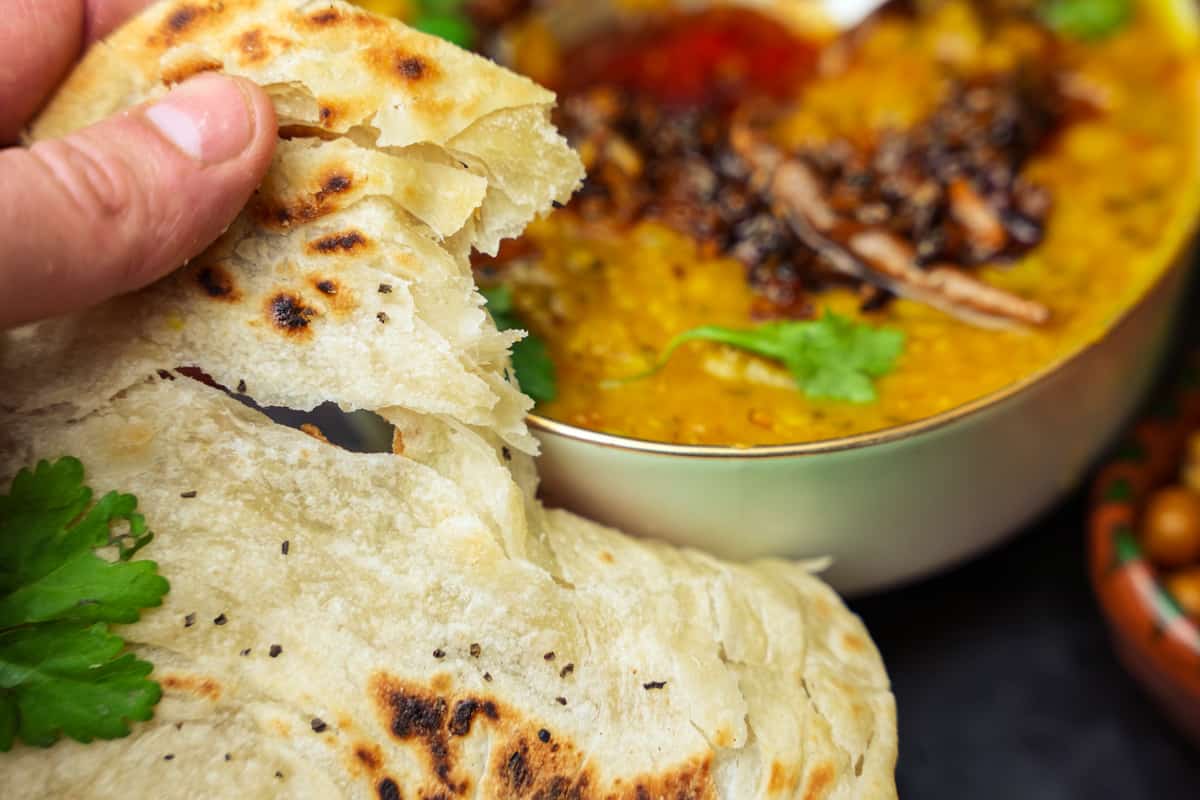

Enter your email & I'll send it to your inbox. Plus, get great new recipes from me every week!
By submitting this form, you consent to receive emails from Cinnamon Snail.
This Malabar paratha recipe requires a bit of finesse to master the art of rolling and forming the dough into multiple layers, but I gotcha! I am including clear step-by-step instructions with photos so that you can nail this on your first try!
Once cooked on a hot griddle until golden brown and crispy, the Kerala parotta—also known as ghee parotta or salna parotta— is ready to scoop up everything from curries like my ridge gourd curry, or vegan butter chicken (made with my crazy-realistic plant-based chicken) to dals such as my arhar dal tadka, chana dal, or Masoor Dal recipes.
With every bite, you'll experience a delightful crunch followed by a burst of savory goodness that will leave you staring into space, wondering why roti and naan ever became more famous than this Kerala Parotta flaky masterpiece!
Grab your rolling pin, because this buttery flaky Kerala-style parotta is going to flip the script on your homemade Indian food repertoire!
Jump to:
- 🥰Why you are going to adore the ever-loving heck outta this buttery flaky malabar parotta recipe
- 🇮🇳What’s so special about this particular style of Kerala Parotta?
- 🌿Kerala Parotta Ingredients and Subsitutions
- 📖 How to make perfect malabar paratha
- ❗️Top tips for Kerala paratha recipe
- 🤷♀️Recipe FAQs
- ✌️Other Indian dishes that go great with this:
- Easy Kerala Parotta (Flaky Malabar Paratha)
🥰Why you are going to adore the ever-loving heck outta this buttery flaky malabar parotta recipe
✨Gear-Free Magic: Unlike naan or roti requiring a tandoor, this Kerala Parotta recipe demands no unusual or pricey cooking gear, making it accessible to all home cooks.
🔄 Versatile Dough Dynamo: This Malabar parotta recipe is incredibly flexible, complementing a variety of Indian dishes and even adding magic to non-Indian meals. Swap it for pita in Middle Eastern dishes like seitan kofta or vegan shawarma or use it instead of flour tortillas for a delightful twist in Mexican fare.
🌀Spiral Simplicity: Shape the dough into its intricate spiral form and refrigerate for up to two days. Enjoy the convenience of whipping up fresh, hot parottas at a moment's notice with minimal mess.
🚀 Speedy and Yeast-Free: Speed meets simplicity with this yeast-free recipe. Make parottas faster and easier. However, if you want to make a laminated flatbread that is, dare I say, even fluffier than Kerala Parotta (because: yeast), check out this killer Moroccan Msemen Recipe.



Curry in a Hurry - Vegan Indian Recipe Club! 🍲💌
This 6-day program is 100% FREE. Let me help you to master plant-based Indian cooking!
🇮🇳What’s so special about this particular style of Kerala Parotta?
This Indian layered parotta is a popular flatbread that is commonly consumed in the South Indian state of Kerala and is often enjoyed as a hearty breakfast. It is a layered, flaky bread that is made by rolling out the dough into very thin sheets, brushing it with oil or ghee, and then folding it over on itself multiple times to create layers. The layers are separated by a thin film of oil, so that when it cooks, similar to puff pastry, it gets fluffy, flaky, and crispy. The layered dough is then shaped into a spiral and rolled out again before being cooked on a griddle or tawa.
What sets Kerala parotta apart from other styles of parotta is its unique texture and flavor. The multiple layers in the parotta allow it to be easily torn apart into smaller pieces, which makes it ideal for dipping into Keralan curries.
In addition to its texture, Malabar parotta also has a distinctive flavor that comes from the use of a little rava and sugar in the dough. This gives the parotta a slightly sweet and rich taste that complements the spiciness of the curries it is often served with.
Kerala parotta is also often called Malabar paratha, because it is the region in the southern Indian state of Kerala where it originated. Malabar was historically a region that covered a large part of the southwestern coast of India, including the present-day districts of Kasaragod, Kannur, Kozhikode, Wayanad, Malappuram, Palakkad, and parts of Thrissur.
The Malabar region has a rich culinary tradition that includes a variety of unique and flavorful dishes, like aviyal, olan, and parval sabji.
🌿Kerala Parotta Ingredients and Subsitutions
One of the best things about this parotta recipe is that it uses very few ingredients! It’s really all in the forming and cooking technique that makes parotta something magical.

Maida Flour
Maida flour is a type of wheat flour that is commonly used in Indian cuisine, particularly in baking and making savory dishes. It is made by removing the bran and germ from the wheat grain, leaving behind only the endosperm, which is then finely milled into a white flour with a smooth texture. If you can’t get maida, I recommend substituting it with a 50/50 mixture of all-purpose flour and cake flour. That will get close to the gluten content of maida.
Oil
While Malabar parotta is often made with ghee, making it with oil makes it completely vegan, less expensive, cholesterol-free, and still allows it to be flaky and wonderful!
Rava, semolina, or fine-grade suji
You can use any of these to make this Kerala parotta recipe. Rava, semolina, and fine-grade suji are all terms used to refer to different types of wheat flour that are commonly used in Indian and Middle Eastern cuisine. Although these terms are often used interchangeably, there are some differences between them.
Rava and semolina are essentially the same thing - a coarsely ground wheat flour that is made from durum wheat. The difference between the two is mainly in their texture, with rava being slightly coarser than semolina. Rava is often used to make savory dishes like upma and dosa, as well as sweets like kesari and halwa. Semolina, on the other hand, is commonly used to make pasta, bread, and couscous.
Fine-grade suji, also known as suji or sooji, is a finer version of semolina, similar to semola (which is my flour of choice to use for making irmik helvasi or forming and baking pizzas with). It is made by grinding the durum wheat into a fine powder. Fine-grade suji is commonly used to make sweets like sheera and ladoo, as well as savory dishes like dhokla in Gujarati cuisine, and rava idli in South Indian cuisine.
In a pinch, you can make this recipe using farina or even fine-grade rice flour in place of rava, semolina or fine-grade suji.
See the recipe card at the bottom of this page for the complete list of ingredients and their quantities.
📖 How to make perfect malabar paratha
You wanna see how this Kerala Parotta gets made? The forming technique is essential if you want to make this like an expert on your first attempt.

Step 1
Form the parotta dough by mixing flour, rava, sugar, salt, water, and two tablespoons of oil. Knead for 6 mins until smooth.
Place the dough in an oiled mixing bowl and cover with a moist kitchen cloth for 2 hours.
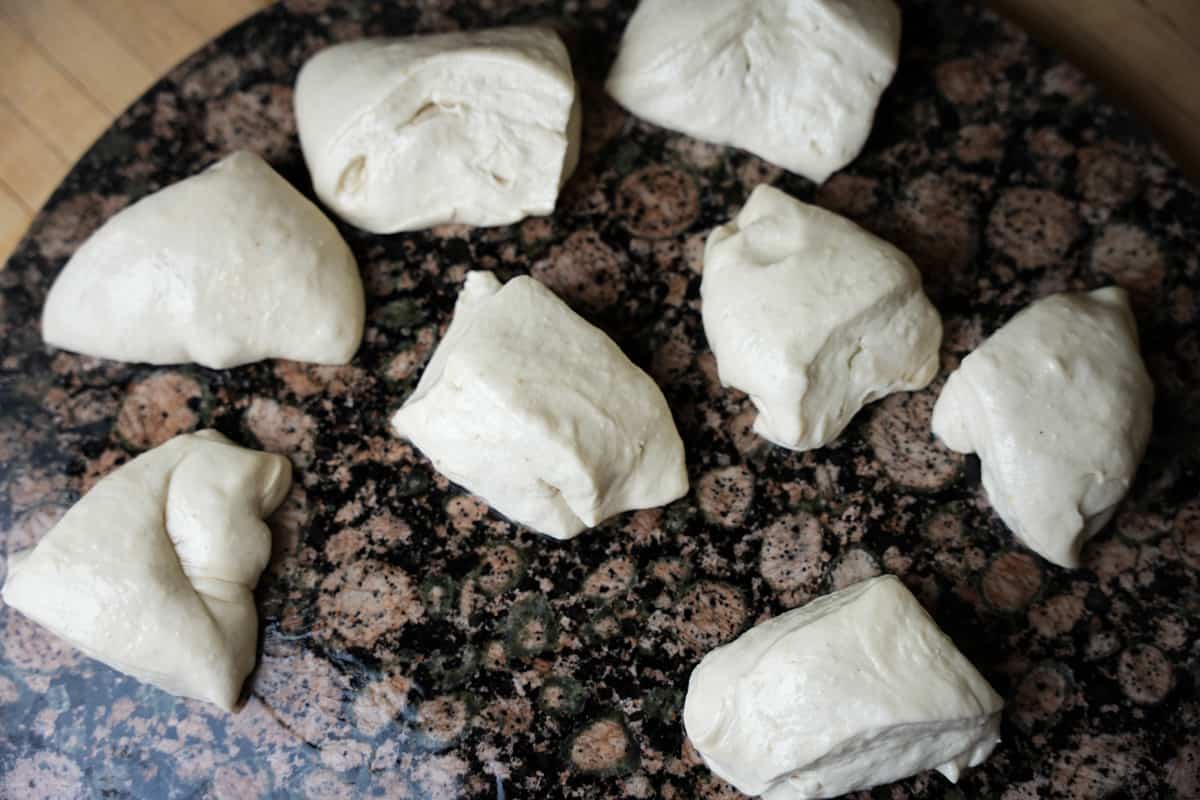
Step 2
Divide the rested dough into 8 equal dough balls.

Step 3
Working one dough ball at a time, roll each one out one at a time on an oiled surface.
Step 4
Add additional oil to the surface of the dough before cutting it into centimeter-thick strips.
Step 5
Gather the strips together into a rope made of thin strands of dough.
Step 6
Stretch the dough rope out to about 14 inches in length.
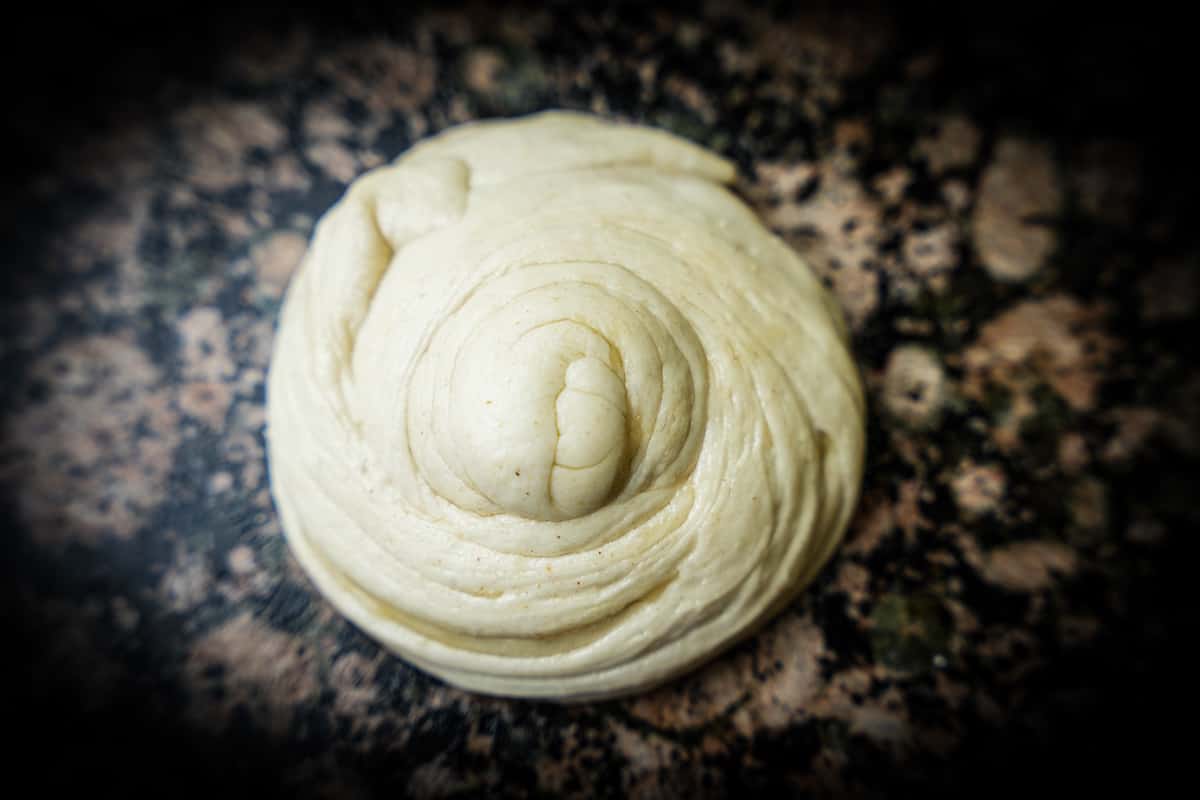
Step 7
Wrap the dough into a coiled rosette-shaped bun, tucking the end back into the center from the bottom side.
Repeat with the remaining dough.

Step 8
Flatten each dough spiral into a 7-inch circle, without using too much pressure, so as not to smush the dough strands completely together.

Step 9
Cook each parotta for 3 minutes on each side in a hot, oiled frying pan. Apply oil as needed between each parotta so that the pan doesn't become dry. The oil will help transfer the heat into the uneven surface of the dough.
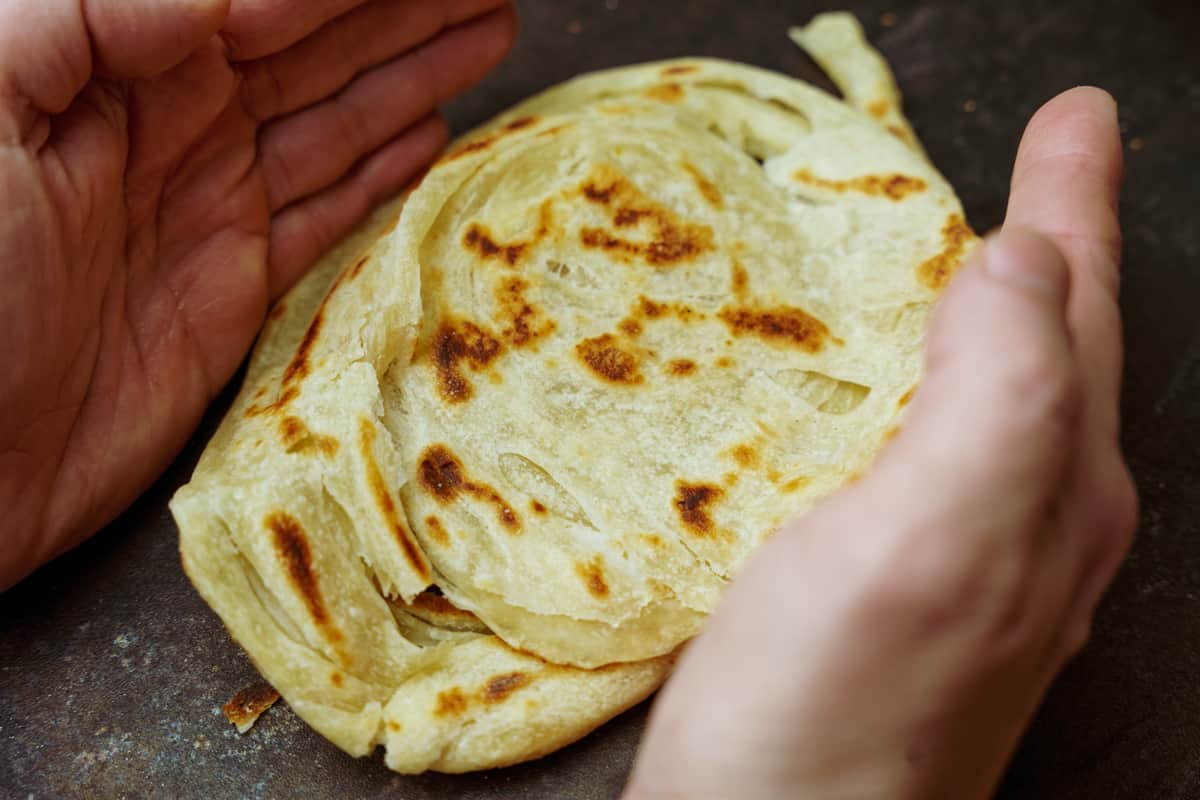
Step 10
Stack the breads under a towel to keep them warm while you cook the remaining dough.
On a flat surface, clap the warm parottas with your hands rapidly from the sides to open layers.

Serve Kerala Parotta immediately with curry or dal over some coconut rice or veg. biryani! It also goes great with non-Indian curries like this vegan Indonesian Sayur Lodeh or this Turkish recipe for mildly spiced fried eggplant.
❗️Top tips for Kerala paratha recipe
Be very generous with the oil that your spread on the dough before you cut it, stretch it, and wrap it into a spiral shape. This will ensure the layers do not fuse together, and the bread cooks up as flaky and layered as possible.
A critical part of getting the ideal final result of this Kerala paratha recipe is breaking the layers apart after cooking. I like to do this by laying the freshly grilled bread flat onto a clean work surface and then “clapping” my hands rapidly around it a few times to open up the layers.
🤷♀️Recipe FAQs
Parotta is thought to have been introduced to Kerala by traders from the Middle East or Malaysia, who brought with them a similar type of flatbread known as roti canai. Over time, parotta evolved into its own distinct style, with the addition of ingredients like egg, milk, and sugar to the dough.
Kerala-style parotta is a popular street food in the state and can be found in many local eateries and roadside stalls. It is also commonly served in restaurants and homes, often as a side dish with spicy curries or gravies.
Parotta relies on the gluten in wheat flour to form its characteristic flaky, layered texture. While certain flatbreads can be made successfully with gluten-free flour, gluten is essential in making this unique type of bread.
Parotta and paratha are similar types of flatbreads, but they are not exactly the same thing.
Parotta, also known as barottau, or porotta, is a popular flatbread in Southern India, particularly in the states of Tamil Nadu and Kerala. It is made by kneading dough with flour, oil, and salt, and then repeatedly twisting and flattening the soft dough to create thin layers. The Malabar parotta is then cooked on a griddle with oil or ghee until it is flaky and crispy.
Paratha, on the other hand, is a type of flatbread that is commonly eaten in Northern India, Pakistan, and Bangladesh. It is made by layering dough with ghee, oil, or butter, and then rolling it out into a round shape before cooking it on a griddle or tawa. North Indian layered paratha can be stuffed with various ingredients, such as potatoes, paneer, or cauliflower, to create a more flavorful and substantial dish.
So while both parotta and paratha are flatbreads that are cooked on a griddle, they differ in their ingredients, preparation methods, and regional origins.
While the finished bread should be served and eaten immediately while still hot, there is a special trick for saving parotta for up to two days.
What I like to do is form the layered dough into spirals, and then place them into a generously oiled flat container. The dough will stay good in the refrigerator for up to 48 hours. When you are ready to cook a fresh parotta, simply roll out one of the dough spirals and cook it in a pan, so that it is freshly made and crispy.
✌️Other Indian dishes that go great with this:
Say Hi on Social! 👋
Follow me on Instagram & Facebook for more recipes.
❤️Love this recipe? It helps me out greatly if you leave a 5-star 🌟🌟🌟🌟🌟rating in the recipe card below and maybe even leave me a lovey-dovey comment too!
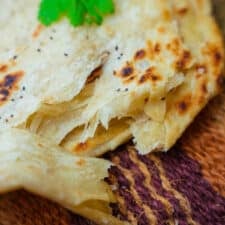
Easy Kerala Parotta (Flaky Malabar Paratha)
Equipment
Ingredients
- 3 cups maida or 1 ½ cups all-purpose flour mixed with 1 ½ cups cake flour
- 4 teaspoons rava / semolina / or fine-grade suji
- 2 teaspoons sugar My preference is evaporated cane juice
- 1 teaspoon salt
- ¾ cup water
- 2 tablespoons canola or vegetable oil
- Additional canola or vegetable oil for forming and cooking
Instructions
- Mix together the flour, rava, sugar, salt, water and 2 tablespoons of oil.
- Knead the dough by hand for 6 minutes until a smooth, elastic dough ball is formed.
- Lightly oil a mixing bowl, and place the dough ball into it. Drizzle with a little additional oil.
- Place a moist kitchen cloth over the bowl, and let the dough rest and hydrate for 2 hours.
- Divide the dough into 8 equal balls.
- Working with one dough ball at a time, on a well-oiled surface, with additional oil on your rolling pin, roll the dough out into a very thin rectangular shape. The dough should be almost thin enough to see through slightly in some spots.
- Brush the surface of the rolled-out dough with extra oil, either by hand or with a pastry brush.
- Cut the dough into centimeter-wide strips using a sharp knife.
- Using a bench scraper, or your hands gather up the strands of cut rolled dough into a “rope” of dough strands.
- Stretch the dough strand rope to at least 14 inches (35 cm.) in length.
- Wrap the rope of dough up into a spiral-shaped bun, tucking the end back into the center from underneath so it doesn’t unravel.
- Repeat forming the spiral-shaped bun with the remaining portions of dough.
- Warm a frying pan over medium heat.
- Again, working one at a time, first press a formed dough ball down into a flat disk, and then roll it outwards with a rolling pin to form a 7-inch (17cm) disk. You don't want to roll it very thin, or with too much pressure, as that may cause the layers to merge back together, which results in less flaky bread once cooked.
- Drizzle the frying pan with a little extra cooking oil.
- When the pan is hot, cook the rolled-out parotta for about 3 minutes on each side until cooked through and spotted with golden brown patches.
- As you cook subsequent parottas, keep the cooked ones warm under a clean kitchen towel.
- Just before serving, place the warm parottas on a flat work surface and clap your hands against them rapidly for the sides to break open the layers and flakes.
- Serve immediately with curry or dal or your choice.
Notes

Enter your email & I'll send it to your inbox. Plus, get great new recipes from me every week!
By submitting this form, you consent to receive emails from Cinnamon Snail.

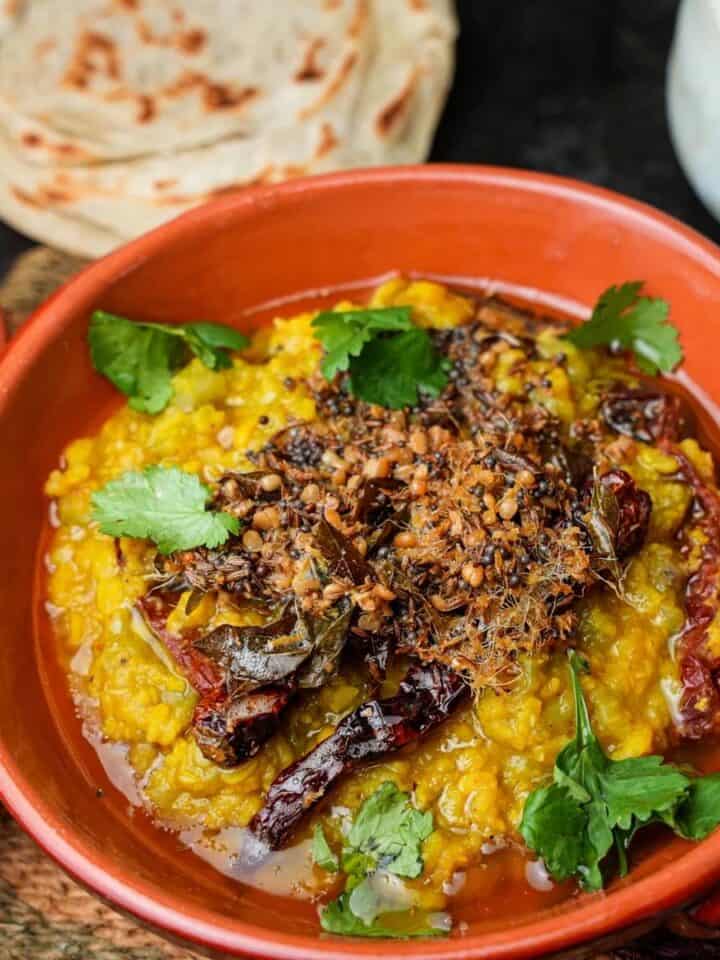
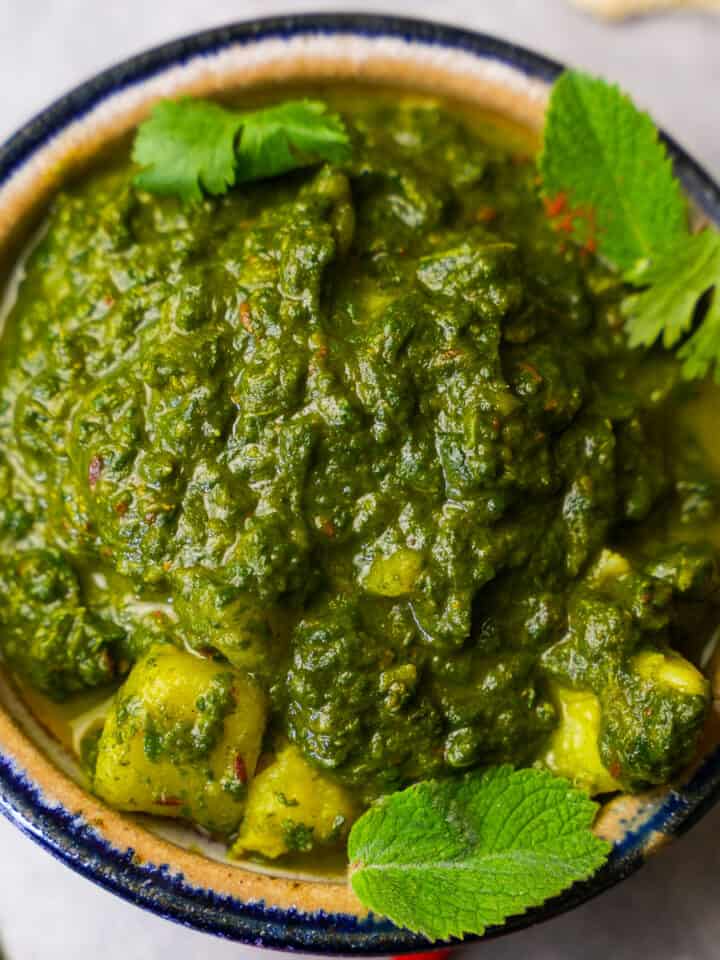
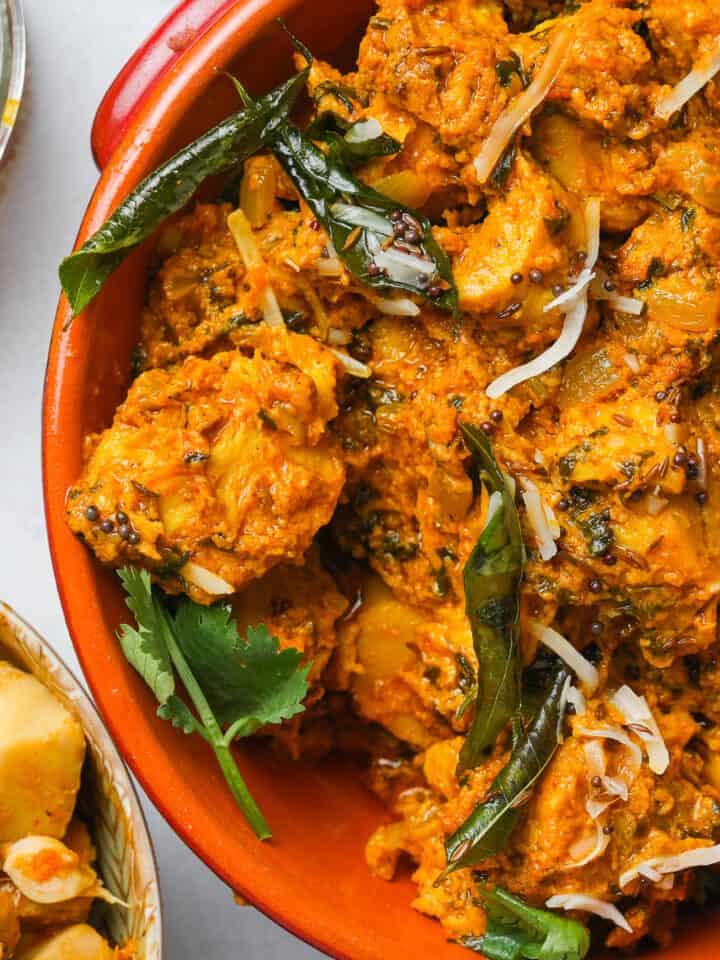
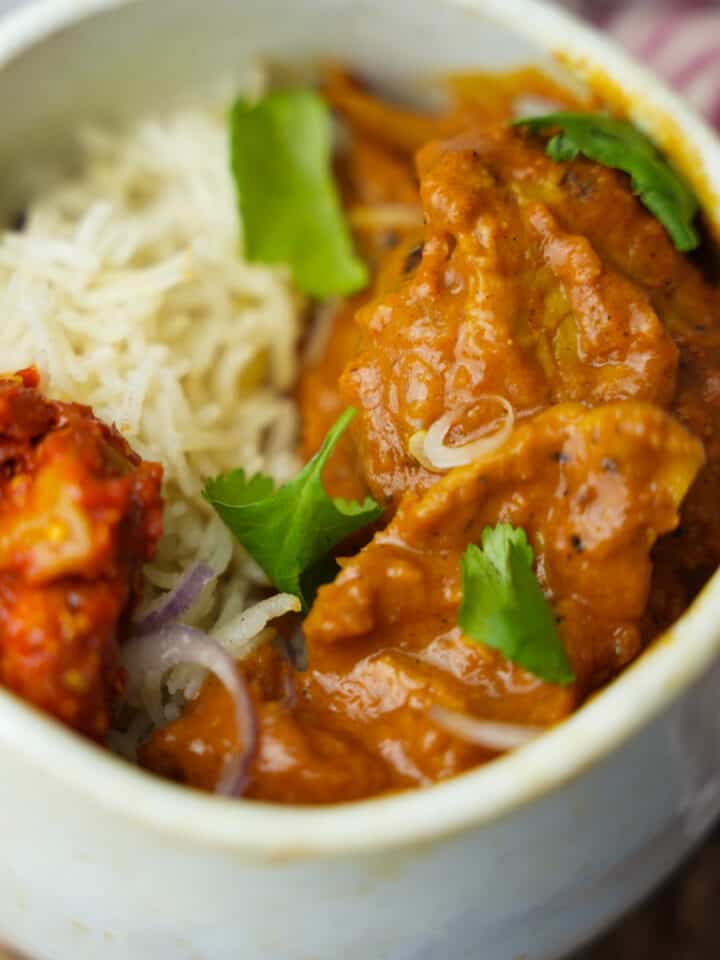






HG says
Nothing beats home made bread. I could literally eat this all day log by themselves, but oh how good they are when dipped in an Indian curry sauce.
Pam says
This bread was soooo very good. Very easy to follow instructions. Definitely will make this again!
Adam Sobel says
Glad you loved it Pam. I think it's magical when hot especially.
VERA SIMONE says
Beautiful recipe! Thank you for making it so easy.